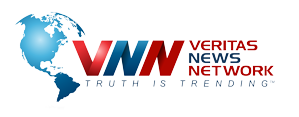
Can NCAA Adapt to Impending Change? Inside the Future of College Sports: Part I of III
Years from now, the college sports world will look back upon today as perhaps the most significant time in its history. It is a time of palatial prosperity for the National Collegiate Athletic Association; unprecedented profits and popularity have catapulted its product to the vanguard of American sports. But it seems the only thing that can keep up with the NCAA’s penchant for power is its magnetism for ethical imbroglio and scandal. While concord is becoming increasingly difficult to find within the organization, nearly everyone inside seems to harmoniously agree that change, in some scope, is coming.
But what that change will look like seems to be the million – or more appropriately, multi-billion – dollar question. The NCAA is reportedly projected to rake in over $900 million in revenue this year, thanks almost entirely to prodigious television contracts and other media rights payments, and that number is expected to climb to over $2 billion by 2020. Burgeoning outrage that is beginning to smother the brand clearly isn’t stemming from the amount of money being made, but rather from how it’s being allocated. The athletes, or as the NCAA would swiftly correct you to say, “student-athletes,” are being excluded from the ever-expanding pot of gold.
The NCAA has always defended not paying players because they receive scholarships instead. But that rule was instated before ESPN and the internet made college sports (and all others) into colossal cash machines. Now, football and men’s basketball have become such potent revenue generators that many are starting to wonder why a small group of predominantly old, rich white guys from the south are collecting all the treasure when a far larger group of predominantly African-American young men spend all day digging for it – and why that thought creates a disconcerting feeling of history repeating itself.
Of course, NCAA President Mark Emmert and his clan of athletic directors and college presidents are against “pay-for-play,” since that money would likely come from their own pockets. But the salaries of the aforementioned regime, along with those of the coaches, continue to dramatically ascend. Last season 70 football coaches made over $1 million, 50 made over $2 million, and 25 made over $3 million. In 39 states, the highest paid state employee is a football or basketball coach, and college presidents wear the crown in five of the remaining 11 states. Emmert himself makes $1.6 million.
Directly paying players to compete, many argue, turns the NCAA into a semi-professional league. But as the television contracts, merchandise sales, and administrator salaries keep swelling, how can the athletes, those most responsible for all the income and those risking their own futures the most, not get a piece of the pie? In former NCAA President Walter Byers’ book Unsportsmanlike Conduct: Exploiting College Athletes, he writes, “Today the NCAA Presidents Commission is…firmly committed to the belief that the enormous proceeds from college games belong to the overseers and supervisors. The plantation workers performing in the arena may only receive those benefits authorized by the overseers.” Andrew Zimablist argues in Unpaid Professionals the NCAA coined the term “student-athlete” simply so they could ostracize them from earnings and avoid potential lawsuits.
The NCAA polity doesn’t just refuse to share, but also won’t allow athletes to beget money from their personal brands. Former UCLA basketball star Ed O’Bannon brought a class-action lawsuit against the NCAA with numerous other former athletes, alleging the NCAA shouldn’t be allowed to directly profit from player likeness on jerseys, in video games and elsewhere. Recently, a US District Judge ruled that players could in fact challenge NCAA rules that “prohibit compensation beyond the value of their athletic scholarships.” However, she denied their pursuit of billions of dollars of lost revenue from the past, only allowing players to sue for damages individually.
Earlier this season, the NCAA alleged Texas A&M quarterback Johnny Manziel had sold his own autograph, and responded by suspending him for half a game. Yet in years past, similar or even lesser offenders received far more substantial penalties (Part II of this story will further explore the NCAA’s laughable enforcement record). Meanwhile, the NCAA online store continued to sell Manziel’s jersey until ESPN analyst Jay Bilas tweeted in indignation, and jersey sales were immediately removed from the site.
The NCAA’s egregious and widening wealth disparity, which has alarming similarities to the rest of the world, has long since crossed the line of being a picketing cry for justice by ignorant idealists. There seems to be an ostensible business opportunity to disrupt the carefully guided cash flow that is passing by those who are creating it. History has taught us this scenario is unlikely to last long; a flame added to those portentous ingredients is a recipe for revolution.
As if all of the above weren’t enough, redistribution of wealth isn’t the only looming threat along the treacherous path that the NCAA has already begun to face. The NCAA is an organization long marred with scandal, corruption, incompetence and hypocrisy. Part II will take a cavernous dive into the off-the-field troubles that have shattered the NCAA’s credibility, thus weakening its legs as it prepares for its tenuous future.
Hence the manifest importance of the present for the NCAA. Even Emmert acknowledged, “It seems to be a bit of a historic moment.” He has apparently come to realize the hard Darwinian truth: a significant upheaval of college sports as we know it is indeed on the horizon, if it is to survive. The NCAA, which declined to comment on this story, has never been more embattled but similarly never more profitable. The road ahead for the NCAA, no matter where it leads, will be the toughest one yet. (Matt Bravmann – VNN) (Image: Flickr | Matt_Velazquez)
This is Part I of a three-part examination of the NCAA. Part II will be published soon.







